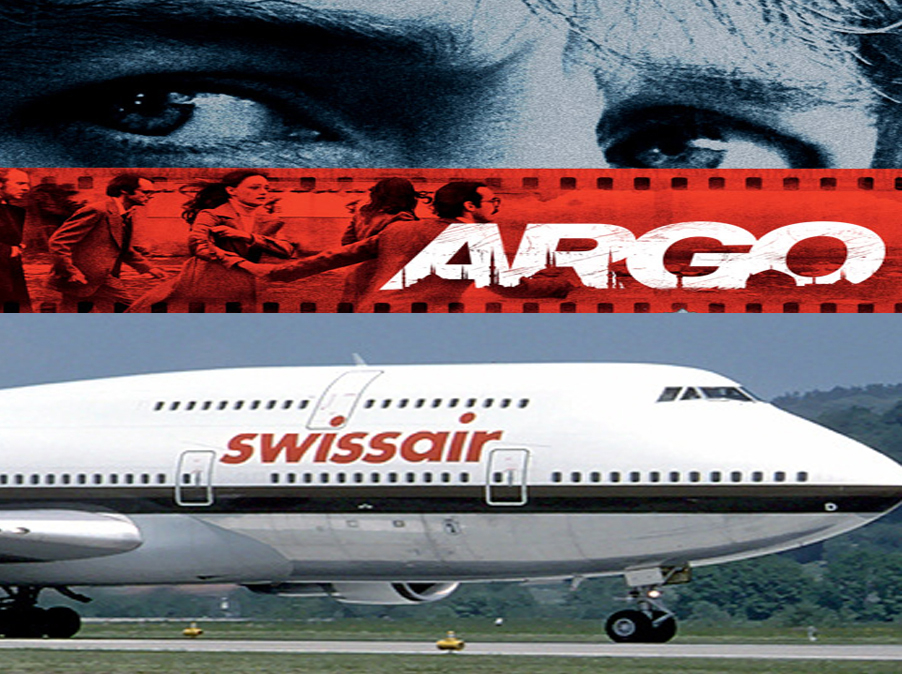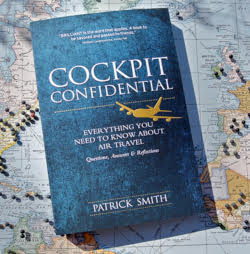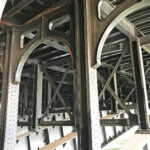“Argo” and the 747

What is it with Hollywood and Airplanes? A Complaint from Ask the Pilot’s Office of Pedantics and Minutiae.
March 1, 2013
SO I WATCHED ARGO, the Ben Affleck movie about the 1979 hostage crisis in Iran.
Those of us of a certain age remember the hostage crisis quite well. Until September 11th, nothing in post-World War Two American history garnered more media attention and public discussion, save perhaps for the Vietnam War.
I thought the movie started strong but ended weakly. The closing sequence, especially, was contrived and overwrought — not to mention historically inaccurate.
But it’s the airplane scenes that we’re here to talk about:
The Boeing 747 is one of the movie’s stars. The iconic jet makes numerous appearances in the period colors of British Airways, Iran Air, and Swissair. Now, I don’t know if the British Airways jet that brought CIA agent Tony Mendez into Tehran really was a 747. And the Swissair plane that carried the six Americans to freedom was, in fact, a Douglas DC-8. But that’s not the artistic license that irks me. (The 747 is no longer the biggest or the flashiest plane, but it’s still the grandest and most historically significant. And any movie set in the 1970s, particularly one focused on what was such a huge international story… if there’s gonna be an airplane, it has to be a 747.)
I’m reminded of the line from that old Nick Lowe song…
“Seven forty seven put him in that condition,
Flyin’ back from a peace keeping mission.”
What irks me, instead, is that these airplane scenes are quite clearly digitalized fakes. Even a child can see this. The shot of the BA flight descending into Mehrabad airport looks like something an eighth grader put together on his iPad — so goofily phony that it’s hard not to laugh out loud.
The Swissair scenes, in the film’s closing minutes, are no better. What a waste. There’s the 747, front and center of one of the coolest moments of the past 40 years. Except that it’s rendered in a sort of CGI-lite. There’s one shot, of the plane’s left wing, where they didn’t even pretend to make it real. The intake of the number one engine is just a two-dimensional black circle. As the kids say, WTF?
As the movie comes to a close, we see the superimposed jet accelerating down the runway, chased along by a phalanx of Iranian military vehicles and police cars. These cars and trucks miraculously keep pace until the nose gear begins to lift. I’m unaware of any jeeps or police sedans able to drive 170 miles-per-hour, but who knows what secret weapons the Iranians had in 1979.
And, by the way, what you see in Argo is a -300 series 747, with the extended upper deck and traditional (no winglets) wing. Swissair did operate the 747-300 for a time. The trouble is, it didn’t take delivery of the first one until 1983, four years after the events portrayed in the film.
That’s cheating a bit, I know. It’s really not fair that I can give them a pass for using a 747 in the first place, yet be offended by which variant was depicted. Here I am complaining because they used the wrong kind of the wrong plane.
Still though, if you’re going to show a plane at all, at least show one that actually existed at the time. Not bothering to do so is laziness. The choice of going with a 747 instead of a DC-8 can at least be argued on dramatic grounds. Going with a model that hadn’t been invented yet is simply incoherent.
You mean to tell me that with the millions of dollars lavished on the production of a major film, that Affleck and company couldn’t have gotten hold of an actual, chronologically correct 747 (it would have been the -200 variant) for a couple of simple runway scenes? At least a few 747-200s are still flying, and I’m sure the owners (cargo companies mostly) would have been happy to lease one out for a few days. Dozens more are mothballed in the deserts of California and Arizona, within driving distance of Hollywood, any one of which could have been painted up in the appropriate colors.
Speaking of which…
Earlier on, I was impressed that they got the period livery for British Airways exactly right, including the typeface used in airport signage. There’s also a very quick shot of the tail section of an Iran Air 747. Here too, though you don’t see it for more than a second, the livery is correct.
But then, with Swissair, they blow it. The colors shown, with the black and brown striping and the full red tail, weren’t used until 1980. They’ve got the wrong plane and the wrong paint job.
I don’t understand why flubs like these are so annoyingly common in movies. When it comes to cars, consumer products, hairstyles and clothes, Hollywood goes through considerable pain and expense to get their period details right — even ones that the average viewer wouldn’t necessarily notice or care about. But with airplanes and airlines, these standards don’t apply, even when the aircraft is center stage. We expect better, especially from a film as critically acclaimed as Argo, and certainly from any movie that’s intended to be read, however loosely, as a historical narrative.
Related Stories:
TOM HANKS IS “SULLY.” WHAT SAYS THE PILOT?
DENZEL WASHINGTON IN “FLIGHT”
THE MEDIA’S AIRPLANE PROBLEM
AIR TRAVEL IN ART, MUSIC, AND FILM



